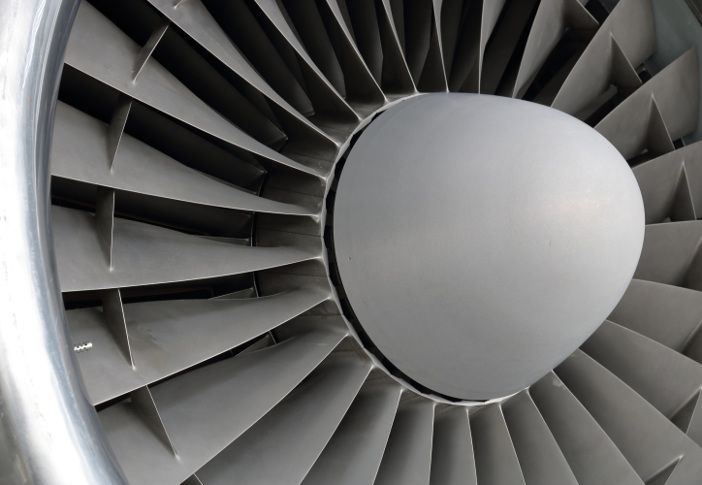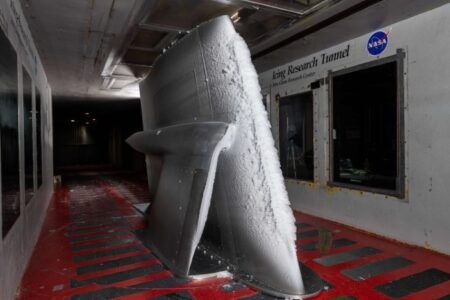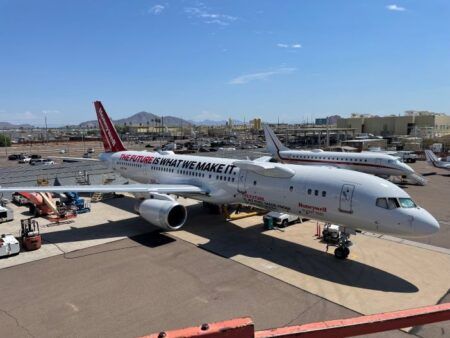Researchers from Texas A&M University, the NASA Langley Research Center, Virginia and the University of Bristol, UK have conducted a computational study that validates the use of a shape-memory alloy to reduce the noise produced during landing.
The passive, seamless fillers could be placed within airplane wings that automatically deploy themselves into position to reduce noise during descent.
During takeoff engines are the primary source of noise, while during landing aircraft slow down, the engines are mostly idling and the wings reconfigure themselves to slow down the airplane and prepare for touchdown.
Similar to the opening of Venetian blinds, the front edge of the wing separates from the main body. This change causes air to rush into the space created, circle around quite violently and produce noise.
Dr. Darren Hartl, assistant professor in the Department of Aerospace Engineering at Texas A&M University said, “We want to create structures that will not change anything about the flight characteristics of the plane and yet dramatically reduce noise.”
“It is similar to how a sound is generated in a flute,” said Hartl. “When a flute is played, air blown over a hole begins to swirl around the hole, and the size, the length and how I cover the holes, produces a resonant sound of a certain frequency. Similarly, the circulating air in the cove created between the front edge of the wing and the main wing resonates and creates a sharp, unpleasant noise.”
S-shaped fillers
Earlier work from Hartl’s collaborators at NASA showed that fillers used as a membrane in the shape of an elongated “S” within this cove could circumvent the noise-causing air circulation and thereby lessen the sound.
The latest research conducted a systematic analysis of candidate materials that can assume the desired S-shaped geometry during descent and then recess back into the front edge of the wing after landing.
The researchers performed simulations to investigate if a membrane made of a shape-memory alloy could go back and forth, changing shape for every landing. Their analysis considered the geometry, the elastic properties of the shape-memory alloy and the aerodynamic flow of air around the material during descent.
For comparison, the researchers also modeled the motion of a membrane made of a carbon-fiber-reinforced polymer composite under the same airflow conditions.
According to Hartl these types of simulations are computationally expensive to model because the air flow around the conformal material has to be modelled, while analyzing the air-induced motion of the material.
“Every time the air applies some pressure to the material, the material moves. And every time the material moves, the air moves differently around it,” he said. “So, the behavior of the airflow changes the structure, and the motion of the structural changes the airflow.”
Wind tunnel validation
Calculations were performed hundreds to thousands of times before the motion of the materials was correctly simulated. When the outcomes of simulations were analyzed, they found that both the shape-memory alloy and the composite could change their shape to reduce air circulation and reduce noise.
The researchers also found that the composite had a very narrow window of designs that would enable noise canceling.
As a next step, Hartl and his team plan to validate the results of their simulations with experiments. For these tests, the researchers will place scaled-down models of aircraft wings with the shape-memory alloy fillers into wind tunnels.
The goal will be to check if the fillers can deploy into the correct shape and reduce noise in near real-world situations.
“We would also like to do better,” said Hartl. “We might be able to create smaller structures that can reduce noise and do not require the S-shape, which are actually quite large and potentially heavy.”
The findings of the program have been published in the Journal of Aircraft.





